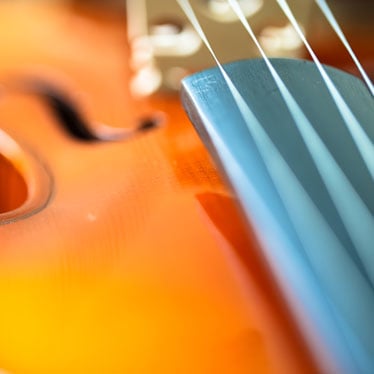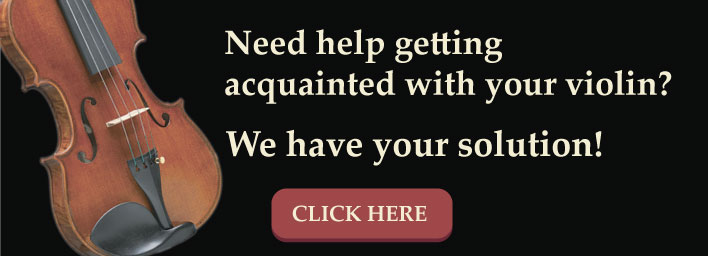In What Order Should I Change My Violin Strings?

There is only one hard and fast rule when it comes to changing your violin strings: do not remove all the strings at the same time. The tension between the strings, wound between the tuning pegs and the tailpiece, is required for the violin to hold itself together. Removing all of the strings at once can cause the bridge and or the sound post to collapse.
The only time all of the strings would be removed at the same time would be to facilitate a repair or necessary bodywork, in which case you should always insert a soft, clean cloth between the fingerboard and the sound post to prevent it from collapsing.
If a string happens to snap or break in the middle of a performance, don’t panic. Simply replace the string in question and then you can proceed with changing out the rest of the strings after the concert. Over time, replacing a string happens in a matter of seconds. In the beginning, however, it’s best to work patiently and methodically through the steps required to replace your strings, so everything is done correctly.
Most violinists change their strings from G to E
You’re welcome to change your strings in any order you choose, one at a time – but most violinists opt to change their strings starting with G and making their way up to the E string. This allows for a clear, methodical process with more balanced tension across the bridge.
As you change your strings, the following tips will ensure proper replacement:
Keep the other strings in tune as you go
Remember we discussed that the bridge and sound post depend on string tension to remain in their proper positions? By keeping the strings in tune as you replace them one at a time, they exert enough tension to keep the violin happy.
Once you’ve replaced each string – G-D-A-E – you can complete the fine tuning before continuing your practice session.
Wind each string the right way around the peg
To tune your instrument properly, the strings must be wound the right way around the tuning pegs; otherwise, you’ll be loosening strings when you should be tightening them, and vice versa. The angle and curvature of a violin’s nut are very specific, so any plan to “wind it all backward and reverse the tuning direction,” is simply not an option or you’ll do repeat damage to your strings and potentially your violin.
Strings are always wound over the peg, with the string loops winding nice and neat, parallel to each other. If they are wound over one another, or they become pinched between the edges of the winding and the side of the pegbox, it can damage your pegbox, and strings will wear and/or break more frequently.
Did you buy the right type of strings?
This is a great time to make sure you have the right type of strings for your instrument. If not, it’s much better to return/exchange them now, rather than after the entire re-stringing process.
- Are they the right gauge (heavy, medium {the most common} or light)?
- Does your E string have a loop at the end, rather than a ball (or vice versa)?
- Are they the right size (did you happily pay a “fractional price” because you bought a fractional, rather than full-size, set…)?
- Does the package look inauthentic (e., did you order cheap, counterfeit strings from an unvetted, online dealer who advertised them as something they’re not)?
While they may cost a bit more, it’s always best to purchase strings from a reputable dealer. We’re partial to Thomastik-Infeld’s lines of synthetic core strings, which have the sound quality of professional strings for a beginner/intermediate price tag.
Don’t forget to save the old strings
It’s a great idea to save any of your old strings that aren’t broken. Coil them neatly and put them into an envelope, marked with the date you removed them. If a string snaps right before or in the middle of a performance, you have immediate access to already-broken-in strings. After the concert is over, you can worry about whether or not you need to replace the string with a brand new version or whether all four strings are ready for replacement.
As with almost everything having to do with the violin, technique and attention to detail are essential to success. So, while you’re welcome to change the strings in any order you want, adhering to proper string replacement protocol protects your strings, the violin, and your ability to play smoothly and beautifully.
Read, The Musician’s Ultimate Guide to Violin Strings, to learn more about these important players in your life as a violinist.


